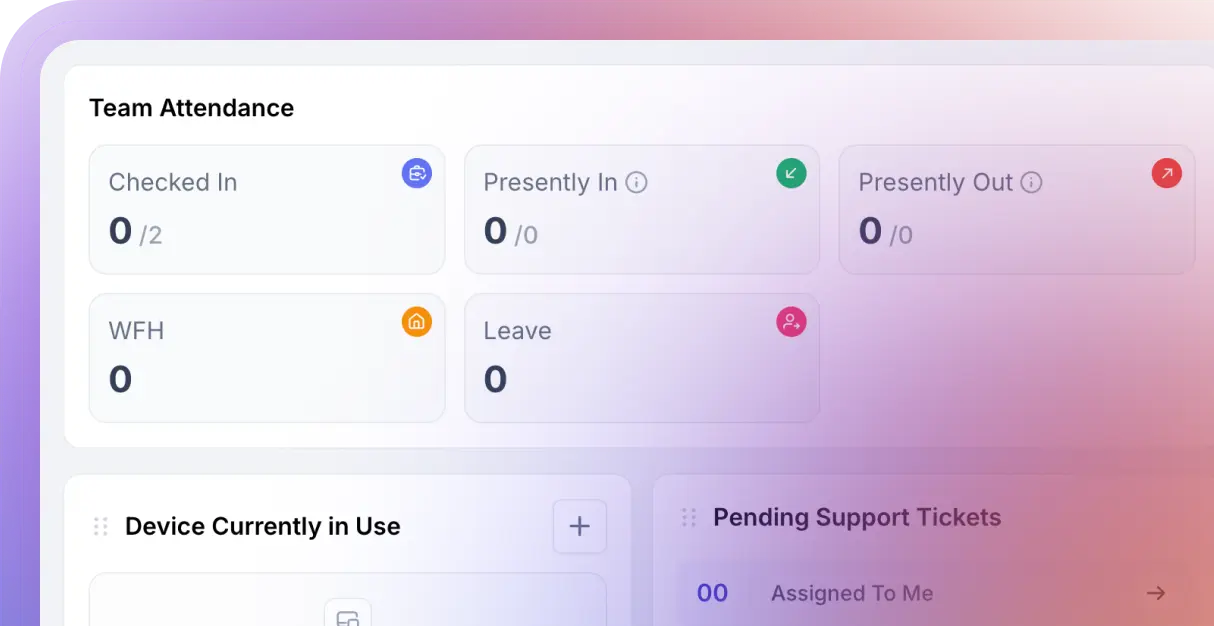The absence of a solid workforce planning strategy can result in a 20–30% drop in productivity during transitions triggered. This disruption can ultimately cause businesses to lose up to 10–15% of their annual revenue.
Capacity management is the solution, as it ensures your business has the right people, tools, and technology to meet demand. With a strong strategy in place, companies avoid last-minute scrambles and stay prepared for sustainable growth.
From keeping your performance strong under pressure to scaling for future growth, capacity management ensures your business is always prepared. This blog explores what capacity management really means, why it’s essential for modern businesses, and how you can implement it successfully to stay ahead of demand.
Key Takeaways
- Proactive capacity planning ensures the right resources are available at the right time, preventing shortages and operational bottlenecks.
- Aligning workforce capacity with business demand helps optimize performance and improve decision-making across teams.
- A strategic approach to capacity planning keeps businesses agile, competitive, and prepared for sudden market or workforce shifts.
What is Capacity Management
Capacity management is the practice of ensuring that a business has the right resources, including people, technology, and infrastructure, available at the right time to meet demand without over- or under-provisioning. It involves forecasting future needs, monitoring current usage, and aligning capacity with business goals to avoid delays, performance issues, or unnecessary costs.
By managing capacity effectively, organizations can optimize efficiency, minimize waste, and remain agile as demand fluctuates.
Types of Capacity Management and How They Support IT Strategy
Capacity management has three main types: workforce capacity management, product capacity management, and tool/equipment capacity management. To effectively balance supply and demand, organizations adopt these types of capacity management. Here’s a closer look at each type:
1. Workforce Capacity Management
Workforce Capacity Management ensures the right number of skilled employees is available to meet current and future business demands. It focuses on planning headcount, skill development, and resource allocation ahead of time.
Example: Hiring and training additional support staff before launching a new customer service channel.
2. Product Capacity Management
Product Capacity Management involves preparing systems and teams to meet the expected demand for a product. It ensures production or delivery capabilities match growth projections and market needs.
Example: Increasing production schedules and resources in advance of a major product launch.
3. Tool/Equipment Capacity Management
Tool/Equipment Capacity Management tracks and optimizes the usage of IT hardware and tools to avoid performance issues. It ensures the infrastructure can handle workloads efficiently.
Example: Adding extra servers to the network to support higher workloads during a company-wide software rollout.
Top Benefits of Effective Capacity Management
Occupancy management delivers a range of benefits, from smarter resource allocation and improved system performance to lowering unnecessary spending and forecasting future needs. It enables organizations to accurately assess both current and future capacity needs, allowing for proactive planning around staffing, infrastructure, and budgeting. This leads to higher productivity, improved customer experiences, and a sharper competitive edge.
Here’s a closer look at the key advantages of capacity management:
- Helps utilize IT resources efficiently and avoid over- or underuse
- Improves system performance by reducing slowdowns and outages
- Lowers unnecessary spending by matching capacity to actual demand
- Makes it easier to forecast future needs and plan upgrades
- Enables smoother scalability as the business grows
- Reduces the risk of service disruptions during high usage periods
- Supports smarter decision-making with data-driven insights
- Aligns IT operations with overall business goals and priorities
Top Capacity Management Strategies To Stay Ahead Of Demand
To effectively manage capacity and stay ahead of demand, organizations need to follow effective strategies, like Lead, Lag, Match, or Adjustment. These strategies help businesses make smarter decisions, reduce last-minute scrambles, and deliver projects on time. The description below is their detailed implementation approach:
1. Lead Strategy
The lead strategy involves scaling up capacity in advance of projected demand. Companies that expect rapid business growth, product launches, or seasonal spikes use this strategy. This approach ensures that the infrastructure and resources are already in place when the demand hits, eliminating delays and maximizing customer satisfaction.
Pros
- Prevents performance issues during high-demand periods
- Enhances customer experience with uninterrupted services
- Demonstrates readiness and forward-thinking
Cons
- Requires significant upfront investment
- May result in idle resources if demand projections are off
Example: A streaming platform expands its server bandwidth and hires additional engineers months before releasing a highly anticipated original series.
2. Lag Strategy
In contrast, the lag strategy adds capacity only after demand has already increased. This conservative approach is best suited for businesses seeking to minimize costs and avoid unnecessary expenditures, particularly in environments with stable or slowly growing demand.
Pros
- Cost-effective by avoiding early investments
- Reduces the risk of overcapacity
- Ideal for small or budget-conscious businesses
Cons
- Can lead to delayed responses or service degradation
- May damage customer trust during peak periods
Example: A software company hires additional customer support agents only after customer wait times become consistently long.
3. Match Strategy
The match strategy aims to align capacity closely with real-time or forecasted demand. Businesses using this model scale resources in smaller, incremental steps based on actual usage trends. It strikes a middle ground between risk and cost, offering flexibility and efficiency.
Pros
- Balances responsiveness with cost efficiency
- Enables dynamic adjustments to changing demand
- Ideal for businesses with seasonal or unpredictable usage patterns
Cons
- Requires accurate forecasting and frequent analysis
- May involve frequent reconfigurations or planning
Example: A retail website increases cloud storage and server capacity just ahead of holiday shopping seasons, then scales back as traffic returns to normal.
4. Adjustment Strategy
This dynamic strategy involves continuous, data-driven updates to capacity based on usage patterns, performance metrics, and business priorities. It’s designed for companies operating in fast-paced environments where agility is essential.
Pros
- Highly flexible and responsive to demand changes
- Minimizes waste while maintaining performance
- Supports long-term strategic planning
Cons
- Needs advanced monitoring and analytics tools
- Complex to manage without automation or expertise
Example: A SaaS company reviews platform usage every two weeks and scales cloud resources up or down based on login frequency and feature usage.
Key Stages in an Effective Capacity Management Process
The capacity management process typically involves three key stages: measure, analyze, and track. These steps enable organizations to optimize resource use, maintain service quality, and strategically plan for growth and change. Let’s take a closer look at each stage:
1. Measure
This stage is all about gathering accurate data. You start by measuring current usage across your IT infrastructure, including servers, applications, network bandwidth, and even human resources. It gives you a baseline understanding of how much capacity your business is using and where.
2. Analyze
This step turns raw data into insight. You analyze patterns, identify peak usage times, and forecast future needs. This stage helps you understand what’s working, what’s under pressure, and when you’ll likely need to scale up or down.
3. Track
Tracking is about continuous oversight. It ensures you’re not just responding to problems but staying ahead of them. Regular tracking helps fine-tune performance, control costs, and keep capacity aligned with evolving business needs.
Challenges in Capacity Management and Their Practical Solutions
Occupancy management presents several key challenges, such as unpredictable demand, limited resources, a lack of transparency, keeping up with shifting business needs, and balancing costs while ensuring consistent system performance.
Organizations face these hurdles often, but they can be tackled with effective solutions. Below is a closer breakdown of these common challenges and their solutions.
1. Unpredictable Demand and Forecasting Accuracy
Challenge: Resource demand can shift without warning, making optimization a challenge. Sudden growth, seasonal peaks, or market changes can leave teams scrambling to allocate resources efficiently and maintain performance.
Solution: Use historical data trends, scenario planning, and AI-based forecasting tools to improve prediction accuracy. Implement flexible capacity plans that can scale when needed.
2. Limited Resources and Prioritization Challenges
Challenge: Teams often work with tight budgets and limited infrastructure, making it difficult to support every business request.
Solution: Establish a prioritization framework that aligns capacity allocation with business goals. Focus resources on critical systems and use cost-effective cloud options where possible.
3. Lack of Transparency and Cross-Team Alignment
Challenge: Capacity issues often arise when teams work in silos, with poor visibility into shared systems and workflows.
Solution: Use centralized dashboards and integrated tools that give all stakeholders a unified view of capacity metrics, enabling real-time communication and alignment.
4. Keeping Up with Shifting Business Needs
Challenge: Rapid product launches or market pivots can outpace your current capacity planning model.
Solution: Review and update capacity plans regularly. Involve business teams in capacity planning to stay informed about upcoming initiatives and resource needs.
5. Balancing Costs with Capacity Needs
Challenge: Over-provisioning wastes money, while under-provisioning risks downtime and poor performance.
Solution: Adopt hybrid strategies and use efficient software for capacity management. Continuously monitor usage to adjust resources dynamically and stay within budget.
6. Ensuring Consistent System Performance
Challenge: As demand grows, performance can degrade if capacity doesn’t scale in time; which might decrease the profitability over time.
Solution: Set performance benchmarks and alerts. Automate scaling and load balancing to maintain responsiveness even during peak loads.
Final Thoughts
In project management, capacity management isn’t just a background task but the backbone of delivering projects on time, on budget, and without burnout. When teams understand their true capacity, they gain more than just stability. They gain clarity on timelines, confidence in commitments, and the agility to adapt when priorities shift.
Smart project managers prepare before the crunch hits, aligning resources with demand so work flows smoothly instead of chaotically. In a fast-moving environment, reacting late puts projects and reputations at risk. Being ready turns capacity planning into a project’s competitive advantage.
Struggling With Resource Planning? Use CollabCRM For Capacity Management
As a powerful business operating system equipped with a robust project management module, CollabCRM helps businesses align people, processes, and priorities with real-time capacity data. It gives businesses complete visibility into workload distribution, project timelines, and future demand.
CollabCRM allows businesses to forecast demand, allocate resources based on availability and skillsets, and instantly adjust to shifting business needs. With built-in analytics and reporting, businesses can track resource utilization, identify bottlenecks before they slow down, and make data-driven decisions to achieve their growth goals.
FAQs on Capacity Management
Capacity management has three key sub-processes, including Business Capacity Management, Service Capacity Management, and Component Capacity Management. Together, they align IT resources with both current demands and future growth, ensuring the business runs efficiently at every level.
To calculate a team’s capacity, use the formula: Team Capacity = (Work Hours per Day × Work Days) × Availability × Number of Team Members. Determine the total working hours per person, adjust for availability (like vacations or meetings), and multiply by the team size. For example, a 5-member team working 8 hours/day for 10 days at 80% availability has a capacity of (8×10)×0.8×5 = 320 hours. This helps you plan work realistically.
Excess capacity occurs when a business has more available resources than it currently requires to meet demand. It means the organization isn’t fully utilizing its workforce, systems, or infrastructure. While it can offer flexibility for future growth, prolonged excess capacity often leads to inefficiencies, higher costs, and reduced return on investment.
Capacity control is the process of managing and regulating the available resources within an organization to meet current demand without overextending or underutilizing assets. It involves monitoring resource usage in real-time, adjusting workloads, and ensuring optimal performance levels. The goal is to keep operations running smoothly while avoiding bottlenecks, downtime, or excessive costs due to idle capacity.





